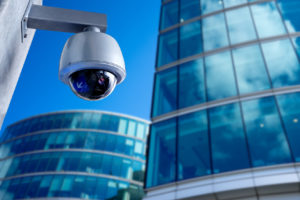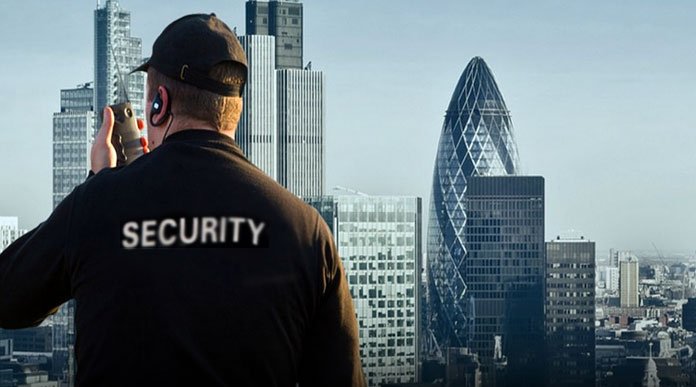Browsing the World of Corporate Security: Key Insights and Ideal Practices
Browsing the World of Corporate Security: Key Insights and Ideal Practices
Blog Article
From Cybersecurity to Physical Actions: Enhancing Corporate Security in a Transforming World
By incorporating the strengths of both cybersecurity and physical safety, firms can develop a comprehensive protection approach that addresses the varied array of dangers they encounter. In this conversation, we will explore the changing hazard landscape, the requirement to integrate cybersecurity and physical safety and security, the implementation of multi-factor authentication actions, the relevance of staff member understanding and training, and the adaptation of safety and security steps for remote workforces. By examining these key areas, we will gain valuable insights right into exactly how organizations can reinforce their business security in an ever-changing globe.
Comprehending the Altering Risk Landscape
The advancing nature of the modern world demands a comprehensive understanding of the altering danger landscape for reliable corporate safety and security. It is critical for organizations to stay notified and adjust their protection gauges to address these progressing hazards.
One key aspect of understanding the changing threat landscape is acknowledging the various kinds of dangers that companies face. Furthermore, physical hazards such as burglary, criminal damage, and company espionage stay common problems for organizations.
Surveillance and examining the danger landscape is crucial in order to recognize possible threats and susceptabilities. This entails staying updated on the latest cybersecurity fads, examining risk intelligence records, and carrying out normal danger assessments. By understanding the transforming risk landscape, organizations can proactively apply suitable safety measures to minimize dangers and protect their properties, track record, and stakeholders.
Integrating Cybersecurity and Physical Safety And Security
Integrating cybersecurity and physical protection is vital for extensive company security in today's interconnected and digital landscape. As companies progressively rely upon innovation and interconnected systems, the boundaries between physical and cyber hazards are becoming obscured. To successfully guard against these threats, a holistic approach that incorporates both cybersecurity and physical safety and security actions is vital.
Cybersecurity concentrates on safeguarding electronic assets, such as networks, systems, and data, from unapproved accessibility, disruption, and theft. Physical protection, on the other hand, encompasses procedures to safeguard physical properties, people, and facilities from susceptabilities and hazards. By integrating these two domains, organizations can attend to susceptabilities and hazards from both physical and digital angles, thereby enhancing their general safety stance.
The integration of these two disciplines enables a much more thorough understanding of security threats and enables a unified response to incidents. Physical accessibility controls can be boosted by incorporating them with cybersecurity methods, such as two-factor verification or biometric recognition. Likewise, cybersecurity steps can be matched by physical safety and security steps, such as monitoring video cameras, alarm systems, and safe access factors.

Applying Multi-Factor Authentication Procedures
As companies increasingly focus on thorough safety and security procedures, one reliable approach is the application of multi-factor verification measures. Multi-factor authentication (MFA) is a protection method that requires individuals to give multiple forms of identification to access a system or application. This strategy includes an extra layer of protection by right here integrating something the individual recognizes, such as a password, with something they have, like a safety and security or a finger print token.
By applying MFA, companies can significantly enhance their safety and security stance - corporate security. Standard password-based verification has its constraints, as passwords can be easily jeopardized or neglected. MFA reduces these risks by adding an added verification variable, making it extra difficult for unapproved people to obtain accessibility to delicate info
There are a number of kinds of multi-factor authentication techniques offered, including biometric authentication, SMS-based confirmation codes, and equipment symbols. Organizations need to evaluate their specific requirements and pick one of the most proper MFA option for their requirements.
Nevertheless, the implementation of MFA should be carefully planned and implemented. It is crucial to strike an equilibrium in between safety and usability to stop customer frustration and resistance. Organizations needs to likewise consider possible compatibility concerns and supply sufficient training and assistance to make certain a smooth shift.
Enhancing Employee Recognition and Training
To reinforce corporate safety, organizations must focus on enhancing worker awareness and training. Lots of safety and security violations take place due to human error or lack of awareness.
Efficient employee understanding and training programs should cover a large range of topics, consisting of information security, phishing strikes, social engineering, password hygiene, and physical safety actions. These programs need to be tailored to the specific needs and obligations of different worker duties within the company. Routine training workshops, sessions, and simulations can aid employees create the required abilities and understanding to recognize and react to safety risks efficiently.
Furthermore, companies must encourage a society of safety awareness and give continuous updates and reminders to maintain employees educated regarding the most up to date hazards and reduction techniques. This can be done via internal interaction channels, such as newsletters, intranet sites, and email projects. By cultivating a security-conscious workforce, companies can substantially reduce the probability of safety and security cases and safeguard their beneficial assets from unapproved access or compromise.

Adapting Security Procedures for Remote Labor Force
Adjusting company security steps to fit a remote labor force is crucial in ensuring the protection of sensitive info and possessions (corporate Discover More security). With the raising fad of remote job, organizations should carry out ideal security measures to mitigate navigate to this website the risks related to this new method of functioning
One crucial element of adjusting safety and security measures for remote job is establishing secure communication channels. Encrypted messaging platforms and virtual exclusive networks (VPNs) can aid shield delicate info and avoid unauthorized access. In addition, companies must impose the use of solid passwords and multi-factor verification to improve the safety and security of remote access.
Another vital factor to consider is the application of secure remote accessibility remedies. This includes offering employees with safe and secure accessibility to business resources and information via online desktop framework (VDI), remote desktop computer procedures (RDP), or cloud-based services. These technologies ensure that delicate info remains safeguarded while allowing employees to execute their duties successfully.

Lastly, extensive safety recognition training is crucial for remote employees. Educating sessions need to cover best methods for securely accessing and managing delicate information, recognizing and reporting phishing efforts, and keeping the general cybersecurity hygiene.
Final Thought
In final thought, as the risk landscape continues to advance, it is vital for organizations to strengthen their protection determines both in the cyber and physical domains. Incorporating cybersecurity and physical safety and security, applying multi-factor verification measures, and boosting employee recognition and training are necessary steps in the direction of achieving durable business security.
In this discussion, we will certainly check out the altering hazard landscape, the requirement to integrate cybersecurity and physical security, the application of multi-factor authentication steps, the value of employee awareness and training, and the adaptation of safety measures for remote labor forces. Cybersecurity actions can be complemented by physical protection measures, such as monitoring electronic cameras, alarms, and safe access points.
As companies increasingly focus on extensive protection steps, one reliable approach is the application of multi-factor verification steps.In final thought, as the hazard landscape continues to advance, it is vital for companies to enhance their safety and security gauges both in the cyber and physical domain names. Incorporating cybersecurity and physical safety, carrying out multi-factor authentication measures, and enhancing worker recognition and training are crucial steps in the direction of attaining robust company safety.
Report this page